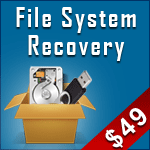
Hex View EML Files and Analyze Hexadecimal Code Structure
Steven | 3rd May 2017 | 4.6 out of 5 stars
Table of Contents
Hex Structure EML Files
The EML files are individual email file that store messages with .eml extension. This file store every single message as the separate file. All Emails and attachments are stored within this extension. The EML file is supported by various Email clients as shown below:

- Mozilla Thunderbird

- Foxmail

- Mail App for Windows

- Postbox

- SeaMonkey

- The Bat!

- DreamMail

- eM Client

- Windows Live Mail

- Outlook Express

- Windows Mail

- Apple Mail

- Zarafa

- Lotus Notes

Note: These EML files of these email clients also referred as Single Mbox Files Since their Hex code and Structure remains same as Mailbox Extension.
View Hexadecimal Code of EML Files in Different Email Clients
- Open Hex Code of Mozilla Thunderbird EML Files
When user view Hex Script of EML files in Thunderbird they see code as shown below

In thunderbird, EML files are created via manual process whose details are mentioned in next section. As you can see above code that EML file consists of all HEX data and can be easily viewed
- View Hex Code of EML files in Foxmail

Same as other EML file supported applications Foxmail create EML files that are created using manual drag and drop process. Its Foxmail Email code is mentioned above.
- Read Hex Code Mail App for Windows EML file
Mail App in windows is a new mail application that is embedded in Windows 8 and 10. This application provides simple Email interface and also create EML files. Unlike other applications user need to create each EML file manually using simple steps:
- Go to top right corner of a particular mail
- Click on three vertical dots. Go to Save as
- Now, Browse location where you want to save your EML file

- See Hex Signature of Postbox EML Extension
Similar to other Email Client Postbox also create EML file. These files are similar to other Email clients EML extension in many ways as shown below

- Check Hex EML File Signature in SeaMonkey
SeaMonkey is an application that Too creates single Email files. This application has other features that are also reflected in the EML file of this email client.

- Observe EML Hexadecimal Code of The Bat! Email Client
The Bat is an application like other Emal clients it consists of drag and drops feature to create EML file.The details are shown below.

- Analyze Hexadecimal Script of EML Files of DreamMail
Dream mail application is another type of Email client that support EML applications. Its code is given below.

- Open Hexadecimal Signature of EML Extension of eM Client
eMClient is another application used which create individual EML file. Its structure is described as shown below.

- View Hexadecimal EML File Signature in Windows Live Mail
Windows Live Mail is an application same as other Email Clients. It was discontinued after a launch of Mail app in windows. Its EML code is same as other Email clients hence the user can refer hex code of other email clients for reference.
- Read Hexadecimal Signature Outlook Express EML Files
Outlook express was another Email client launched and discontinued parallel to Windows Live Mail. This Email Client was also widely user but due to security and some technical flaw, Microsoft discontinued this product. To see EML file of this application user can refer EML file of other applications.
- See Hexadecimal Script of EML of Windows Mail
This Application consisted of same features and qualities as Windows Live mail. It was also discontinued due to security and technical issue. Refer EML code of other application regarding this email client EML file.
- Check Apple Mail EML Hexadecimal Code
The Apple Mail is an application that is used as a default mail in Mac. This Email client also creates EML file. Its details are mentioned below.

- Observe Hex File Signature Zarafa EML Files
Zarafa is a server that store Email client or other application data. This server also creates EML files of Emails which help a user to access particular emails.
- Analyze Hex Script of Lotus Notes generated EML
In Lotus Notes generates EML file for documents. The HEX code for same is mentioned below.

Brief about Hex EML Files and Its Location
The Location of EML file depends on where it is created hence, EML files doesn't have a predefined location.
Verify Hexadecimal Signature EML Files
As you have read and understood the hexadecimal code of EML file it's time to verify that the code is correct or not. Each EML file contains a specific hexadecimal code. Since its a single email file hence each email has From or from keyword inside it. As you can see below Each Email Client consists of From keyword in its EML hex code. This keyword has 46 72 6F 6D as its Hexadecimal code. Their details as shown below.



Conclusion
The above description is based on Hexadecimal View of EML file in different Email clients like Thunderbird, Foxmail, Mail App Windows, Postbox, SeaMonkey, The Bat!, DreamMail, eM Client, Outlook Express, Apple Mail, Lotus Notes etc. Each EML structure is nearly same and consists of common file signature as observed. It has also been observed that the EML file are user generated and not created by email application as a default.





